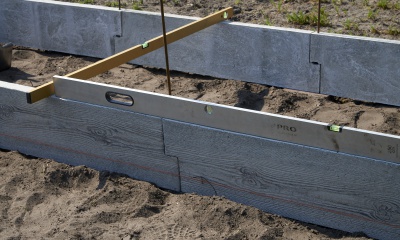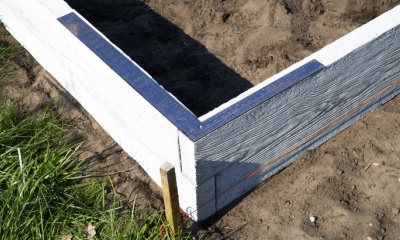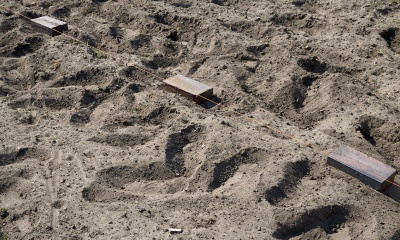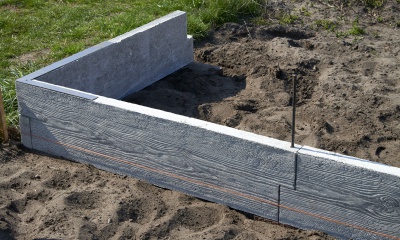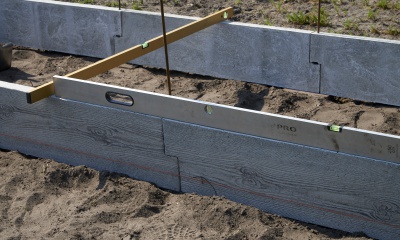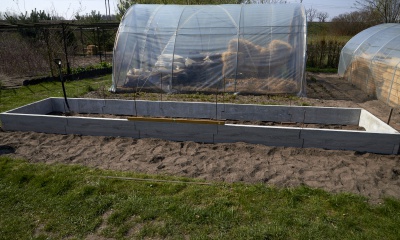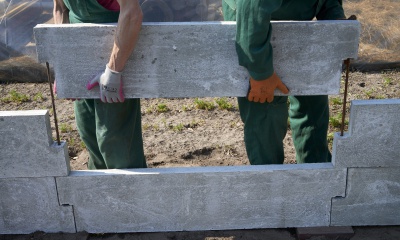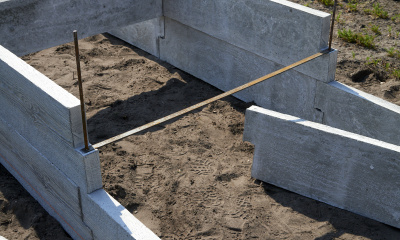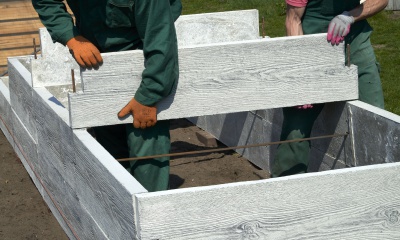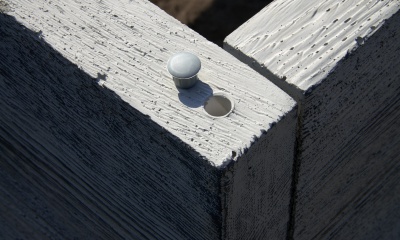Installation of the vegetable garden
See how easy it is!
During assembly, it is recommended to use silicone in order to fill the gaps between the individual elements, as well as to obtain greater stability of the resulting structure. The use of silicone will prevent the individual elements from shifting while filling the vegetable garden with soil. This treatment will certainly increase the aesthetics and durability of the structure. The vegetable garden is mounted on an even, stable surface. In the place where individual elements are joined, it is recommended to use a concrete slab, block, airbricks or brick. The individual elements are put upwards on the stainless steel tubes in the correct order. Before applying the next element, fastening strips are used to strengthen the entire structure. Before applying the next element, fastening strips are used to strengthen the entire structure. The final step is to glue the plugs into the holes with silicone, in which the tubes are located.
DURING ASSEMBLY, IT IS ALL THE TIME TO CHECK THE LEVEL AND VERTICAL OF THE ASSEMBLED ELEMENT AND THE RIGHT ANGLE OF THE CORNERS.
The use of tubes for the assembly of individual elements of the vegetable garden:
Vegetable pattern board and travertine:
Stainless steel tube fi 12 with a height of 26 cm – 1 layer
Stainless steel tube fi 10, 56 cm high – 2 layers
Stainless steel tube fi 10, 85 cm high – 3 layers
Vegetable soup semi-log pattern:
Stainless steel tube fi 12, 24 cm high – 1 layer
Stainless steel tube fi 10, 54 cm high – 2 layers
Stainless steel tube fi 10, 80 cm high – 3 layers
- 1. Outlining the course of the vegetable garden and arranging reinforcements for connecting elements
- 2. Laying one layer
- 3. Checking the levels
- 4. Application of the next layer
- 5. Method of mounting a flat bar between elements
- 6. Installation of transverse walls
- 7. Installation of plugs
After completing the assembly work, it is absolutely necessary to protect the inner walls of the vegetable garden with foil and impregnation.
Elements of concrete vegetable beds may only be attached to a load-bearing base, i.e. a substrate capable of bearing the load of the entire element including the concrete foundation.
We distinguish three ways of mounting on substrates:
- on solid surfaces, i.e. on ready-made pavements, alleys and roads made of concrete blocks or slabs and asphalt. In this case, the level of the pavement should be checked and the entire area planned under the product should be covered with waterproofing,
- on a concrete foundation built directly into the ground. The foundation is a structural element that transfers the entire load of the structure to the ground. Therefore, the selection of the appropriate foundation solution ensures:
- minimal and even settlement of the structure and its effectiveness,
- proper foundation depth (on the ground layer of appropriate bearing capacity),
- protection of the structure against moisture, e.g. capillary rise, by making horizontal insulations.
- another even, stable surface to prevent settling of vegetable gardens and their stability.
When constructing foundations, remember to level them and even the surface. After obtaining the strength and resistance of the foundation (in accordance with the manufacturer’s instructions, the use of concrete class C20 / 25 with the appropriate exposure class and in accordance with the PN-EN 206 standard), we proceed to further works. In case of unevenness, it is possible to level the foundation with a disc grinder. Then, the entire foundation in contact with the element to be installed is covered with bituminous insulation min. 2 mm.
After securing the inner walls of the vegetable garden with impregnation and foil, fill the structure with soil slowly and carefully. Particular attention should be paid to flat bars during this activity. Quick and inattentive filling may cause deformation of the entire structure due to shifts, inclinations as well as cracks of individual concrete elements.

